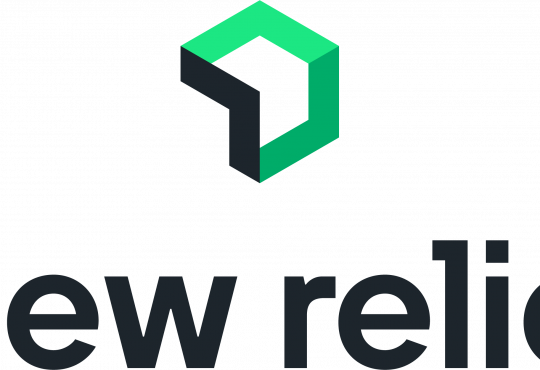
Data-driven business models are fast becoming the norm across the world. In India, a large number of companies that rapidly went digital are soon realising that they need a way to streamline all the data they generate, make sense of it and put it to good use. Most organisations create and operate digital products using multiple clouds and complex software architectures. These investments in architecture empower customer engagement models and customer experiences, and CEOs now realise that their technology architecture has become their business architecture. It also means that without the right data, businesses are hard pressed to achieve growth. And what you don’t know can hurt your teams and the company’s bottom line. In this interview, Pradeep Seshadri, Head of Solutions Consulting, India, New Relic, discusses how all-in-one observability solutions are at the heart of establishing data-driven businesses and how the technology can drive growth among Indian organisations.
- Why is observability central to implementing a data-driven business model?
Telemetry data has the potential to offer powerful insights on what engineering teams need to do to optimise performance; build, run and deploy new features. If harnessed, it can also be used to proactively prevent issues that could impact end users. But you can’t improve what you can’t measure, and with mountains of data generated every hour, it’s an impossible task to analyse a company’s telemetry data manually, which is why observability is crucial.
Observability platforms detect anomalies amidst the continuous stream of all of telemetry data—metrics, events, logs, and traces—to empower engineers to make informed decisions at every stage of the software lifecycle.
Data-driven businesses seek answers to three critical questions: Are teams pursuing the right projects? Is the work being done providing value to end-users? Are resources allocated effectively to meet business goals, and are teams utilising them optimally? If an organisation isn’t answering these questions through an empirical, data-driven process, they likely have blindspots that limit them from meeting their full potential. Without observability, organisations cannot make sense of all the data they generate. It is observability that provides teams actionable insights that can help them tackle issues proactively before they affect customers and the revenue.
- How can observability solutions be used to drive a data-driven culture?
Most businesses in India create and operate digital products using multiple clouds and complex software architectures. To overcome the complex problem sets that multi-cloud architectures and cloud-native applications present, developers, DevOps teams, platform engineering teams, security, operations, and SREs need an all-in-one observability solution, which provides unified data collection, analysis, and visualisation of large volumes of data to spot, resolve and prevent downtime and outages before they impact customers.
Performance data is crucial to making important decisions, and observability the foundation for a data-driven culture. Organisations can take advantage of observability platforms to ensure that teams across the entire business are able to leverage the power of data to collaborate and make fast, educated decisions to improve system reliability and customer outcomes. Observability is key to adopting a proactive problem solving posture, and getting ahead of operational problems — which is at the heart of a data-driven culture.
- How can observability offer businesses a competitive edge?
Businesses that adopt observability have a strong advantage over those who don’t. Those that adopt an all-in-one observability solution can collect and analyse all telemetry data in a unified fashion that is accessible across IT and business teams as well as executive-level stakeholders. This intelligence is crucial for proactively implementing corrective measures to ensure exceptional customer experiences and prevent adverse impacts on organisational revenue due to downtime.
Observability can help organisations reduce the time to answer performance-related problems from days or hours down to minutes. This empowers site reliability engineering teams to create proper service-level indicators and service-level objectives that can optimise costs and drive maximum ROI on investments.
Observability solutions also empower teams to collaborate with each other, trust in the underlying numbers supporting service-level indicators, while expanding business partnerships. With observability, businesses can continuously identify and improve products and services to meet customer demand. This is a huge competitive differentiator and has the potential to lead businesses on a path to greater growth.
- How can all-in-one observability solutions aid business analytics?
All-in-one observability solutions empower businesses to create a data-driven approach. Adopting this approach involves using clear, concrete insights from telemetry data to guide business decisions, rather than relying solely on instinct or incomplete information.
Observability makes the data behind your decisions visible and enables all of your organization’s engineers across every stage of the software lifecycle to see, understand, and optimize performance based on data. It can also help other business units monitor and measure the performance of KPIs in real-time, quickly identify trends, issues, and opportunities, and ultimately fuel better decision making and business outcomes.
- How can observability solutions help businesses increase revenue and cut costs by harnessing the power of data?
The right all-in-one observability platform can help deliver maximum ROI by providing real business outcomes across people, processes, and technology. The best solutions eliminate organisational silos and offer greater visibility. Businesses can do a lot more to improve the health of their budget. In contrast, most legacy monitoring tools do not report data in real-time and have a lack the flexibility to provide analysis into trends over time. While some businesses in India may instead consider open source or even DIY solutions, these tend to result in siloed data which can cause blind spots to occur, not to mention the high long-term costs and overheads associated with maintaining and running such solutions which may ultimately diminish any initial gains.
Billing issues also come into play. By paying for what you use via a consumption model, businesses can eliminate issues associated with overbuying, underbuying, or vendor lock-in that can lead to billing traps.
Ultimately, observability improves productivity by freeing up existing teams to work on other priorities, enhance mean time to resolution for customer-facing apps, reduce revenue loss, and allow real-time data management and analysis from a business perspective.








